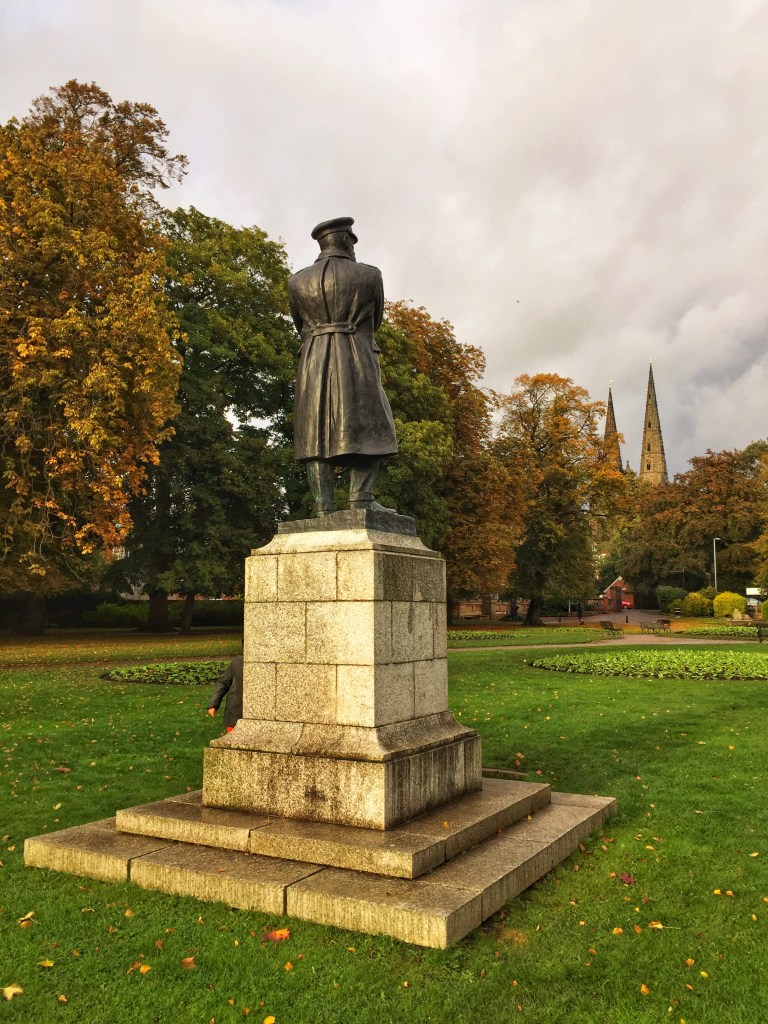
Our first cold and frosty morning of the winter. The sun just breaks through the mist as children slowly wend their way up the lane to school. They enjoy treading on crunchy frozen grass and are fascinated to see their breath as they exhale.

Our first cold and frosty morning of the winter. The sun just breaks through the mist as children slowly wend their way up the lane to school. They enjoy treading on crunchy frozen grass and are fascinated to see their breath as they exhale.

Two recent posts about Titanic museums by fellow blogger Andrew Petcher Andrew’s post reminded me that we have a Staffordshire county connection with the captain of the Titanic, Captain Edward John Smith. In a quiet corner of Beacon Park, Lichfield, just about as far from the sea as it can be in England, there is a statue of Captain Smith. It is larger than life at nearly 8ft (2.4m) tall, mounted on a granite plinth, and cost £740 to commission and manufacture. It has stood there since 1914. The artist who sculpted it was Lady Kathleen Scott, widow of Captain Robert Scott, a victim of yet another ill-fated excursion; two tragedies entwined in one statue.

Smith was born in Hanley, Stoke on Trent, so why did the statue end up in Lichfield, some 30 miles away? There are two main theories.
One suggestion is that it was put there because although the people of Hanley had initially raised the funds for a memorial statue, they, or the authorities, later decided they did not want a statue of a man associated with such a tragedy, and that they would be embarrassed to have Smith’s statue in the town.
Secondly, that Lichfield was picked because it was on a major tourist and coaching route, halfway between London and Liverpool, where the head office of the White Star Line was, and a good place for American tourists to pay their respects to the man who went down with his ship. Because of the cathedral, Lichfield was and still is the heart of the diocese which includes Stoke and Hanley. A further possibility is that the bronze statue may have been cast at a foundry in Lichfield so it was already there and would not incur any transportation costs after the people of Hanley had rejected it although there is no evidence to support this.



So there is nothing new about statue controversies. A few years ago there was an unsuccessful attempt to get the statue relocated to Hanley but it now seems certain that it will remain in the museum gardens of Beacon Park looking towards the distinctive spires of Lichfield Cathedral.

The most precious light is the one that visits you in your darkest hour. – Mehmet Murat ildan.

November, part of this season of ‘mists and mellow fruitfulness, close-bosom friend of the maturing sun’. The days are getting shorter and more and more of them are dull, grey and misty. What’s more, we have just started lockdown 2. We still try to get our daily walk but these are now directly from home or at the most, a short drive away.
After one such walk the other day, we were just about to return home mid-afternoon when the sun suddenly broke through and made a brief appearance.
It was indeed a precious light in an otherwise darkish hour. Photographing directly into the low sun can be a bit pot-luck but always worth a shot or two. In these days of digital photography there is nothing to lose. We have image editing software and apps at our disposal to rescue our efforts, and if all else fails, the ‘delete’ button is never far away.


